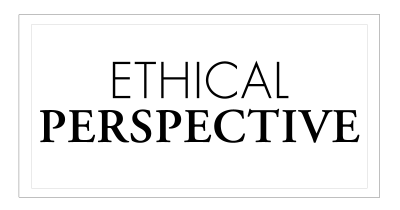
On March 10, news organizations in the United States and around the world reported on the biggest failure of a U.S. bank since the last global financial crisis in 2007.1 It played out in real time as Silicon Valley Bank, a major lender to the tech industry, succumbed to a bank run.2 Customers frantically flocked to the bank, withdrawing money from their accounts. The initial collapse panicked markets and weakened financial institutions already struggling with soaring interest rates.3
After the initial panic, the markets calmed until a week later when a second bank, New York-based Signature Bank, was shut down and a third bank, San Francisco’s First Republic Bank, was found to be teetering on the brink. The collapse of a Swiss bank, Credit Suisse, was saved by that country’s biggest bank, UBS, which provided Credit Suisse with a $54 billion emergency loan.4
Since then, the relative calm had been restored to the banking industry thanks to large sums of emergency cash from some of the country’s strongest financial institutions — more than $400 billion in all to stop the bleeding.5 Additionally, the U.S. Federal Reserve said it would guarantee all deposits at Silicon Valley Bank and Signature Bank, putting the federal government on the hook for $140 billion.6 The federal government also agreed to provide a record amount of loans to banks; institutions nationwide tapped the new emergency lending program for billions of dollars.7
Thankfully, the banking crisis seems to have settled and economists are easing consumer fears. That said, in the aftermath many have wondered, is my money safe?
Lawyers are not immune to this concern. In fact, lawyers not only wondered about their own money, but also the money they safeguard, protect, and hold as fiduciaries.8 Of course, I speak of the client funds placed in lawyer trust accounts including IOLTAs and non-IOLTAs as required by MRPC 1.15 and 1.15A. Therefore, when a banking crisis hits, the obvious question becomes, what about my client’s money?
This is where the Federal Deposit Insurance Corporation (FDIC)9 and the Credit Union Share Insurance Fund Parity Act10 come into play. The FDIC insures U.S. bank accounts “up to at least $250,000 per depositor, per FDIC-insured bank, per ownership category.”11 Under the Credit Union Share Insurance Fund Parity Act, the National Credit Union Administration (NCUA) provides enhanced pass-through share insurance coverage for IOLTAs and other similar escrow accounts.
What exactly does that mean for IOLTAs? Though many lawyers keep their clients’ funds in a pooled IOLTA, each individual client is insured for up to at least $250,000 held at the financial institution.12 This is another reason why it is critical for lawyers to keep meticulous records13 regarding the amount of money held for each client in a lawyer trust account — not only do they need to show how much money in the account is owned by each client, but it’s also important in the event of a banking crisis where the lawyer must rely on FDIC or NCUA insurance.
There is a wrinkle, however. The maximum coverage of $250,000 applies to the institution, not just the account.14 For example, if a client banks at the financial intuition where their lawyer has an IOLTA, that may affect how much is insured. Remember, FDIC and NCUA insure $250,000 per person or entity per financial institution regardless of how many accounts it is spread across. Therefore, it’s important to ask clients where they bank to ensure they still have the maximum amount of insurance coverage. What about clients for whom you hold more than $250,000? What is a lawyer supposed to do when insurance does not cover the full amount?
Lawyers should investigate their clients’ objectives before keeping large sums in a trust account for longer periods of time, especially when the sum is larger than the deposit insurance limit. Once lawyers understand and agree with the clients’ objectives, the simplest option is for the lawyer to do their due diligence and investigate the security of the financial institution in which the lawyer trust accounts are held. This may result in opening new IOLTAs and non- IOLTAs at more stable financial institutions where the likelihood of the institution failing is smaller.15 Lawyers must determine what is best for themselves and their clients. They must also be aware that their obligation does not simply end with making sure that the funds they hold for clients are insured by the FDIC. For lawyers worried about their clients’ funds, the best course of action is contacting their financial institution and asking about security options regarding lawyer trust accounts while considering the amount of money in that account. Further, as required under MRPC 1.4, lawyers must have open communication with clients to provide them with a sense of security regarding their funds before accepting them to hold. Ultimately, it is the lawyer’s decision where the funds are held.
Currently, there are no Michigan ethics opinions regarding this matter. However, other states such as Florida and Virginia published opinions in 2008 when banks experienced similar issues. In an ethics opinion still pertinent today, the State Bar of Florida provided the following information:
[T]here is no ethical requirement that a lawyer divide trust funds in order to ensure complete FDIC coverage, he is nevertheless to act prudently and consider the deposits’ size and reputation of the financial institutions concerned.16
No one can predict when the next banking crisis will happen or which financial institution it may affect. After all, we are lawyers, not oracles. The only thing lawyers can do to protect clients is get as much information as possible to pass on to clients and provide the best security possible.